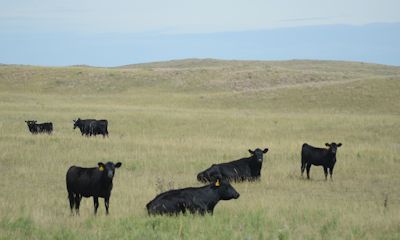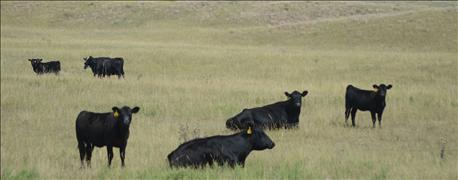May 20, 2016

By Allan Vyhnalek
From the cool-season pastures in the east to the native rangelands to the west, grazing in Nebraska is vastly different from one part of the state to the other. This means a difference in available resources, a difference in grazing season, and different challenges to contend with. While the grazing season is underway in some parts of Nebraska, it's always helpful to review pasture lease arrangements and who is responsible for what. Here are some typical pasture lease considerations and how to deal with them:

QUESTIONS TO ASK: Natural disasters need to be discussed before signing the pasture lease. What is going to happen to the lease arrangements in case of a fire, severe hail, or severe drought? Lease provisions should outline who is responsible for determining when cattle should be removed from the pasture, and how much prior notice the tenant has.
Cost and labor for fence repairs – It is expected that the land owner has the fences in good shape when the lease starts. If fences need attention, the lease agreement should outline the maximum cost of materials for fence repairs to be paid by the landlord and the in-season labor for fence repair to be borne by the tenant. However, there is wide variability on this. When the fencing repairs are significant, the tenant should receive a discount on the pasture rent or monetary compensation for their labor. When whole segments of external fence have to be installed or renovated completely, then the landlord helps with labor too.
Water and water supply – The landlord is responsible for supplying water and stock tanks. The tenant is responsible for the management of water during the grazing season. If there is erosion around the water tank, the tenant is responsible for repairs as needed. If there is a drought and the well runs out of water, re-drilling the well is typically a landlord expense.
However, landlords and tenants need to include clauses regarding adverse weather, such as drought or severe hail, prior to those catastrophic events and have a plan in place. For example, there should be agreement about what will happen prior to drought. That way, there are no hard feelings during emergencies and immediate action can be taken in the situation.
~~~PAGE_BREAK_HERE~~~
Eastern red cedar control – This is a landlord issue. However, the tenant can be helpful by not over-grazing the pasture. With good grass competition, the tree germination remains low. Be sure to make arrangements to control cedar trees while they are small – less than three feet tall. When trees are older and larger, only mechanical control can be used, which is much more expensive. In pastures where the tenant manages infestation, the landlord should give that tenant a discount on the rental rate or compensate them monetarily for their labor.
Noxious weeds (like musk thistle) – There is no typical guideline for weed control in Nebraska. In some neighborhoods, the tenant is responsible for thistle control. In other areas, the landlord assumes responsibility. Again, the condition of the pasture will help with controlling the germination of all noxious and obnoxious weeds. Good management will be key to keeping weed pressure in check.
Drought, hail and fire – The possibility of natural disasters needs to be discussed prior to signing the pasture lease. What is going to happen to the lease arrangements in case of a fire, severe hail, or severe drought? Lease provisions should outline who is responsible for determining when cattle should be removed from the pasture, and how much prior notice the tenant has. How will rent be prorated for removing cattle early? If supplement feed is provided, who is responsible for feeding? How will additional expenses like trucking, water hauling and other miscellaneous expenses be compensated?
While there is no magic answer on how to adjust the lease, understand the lease has to be adjusted in those situations. For example, during adverse weather the pasture should not be completely overgrazed.
Another consideration is the Livestock Forage Program (LFP) for drought-affected grazing. If the drought is severe enough, like in 2012, a payment for LFP is earned. In that situation, if the landlord is paid for the entire expected lease, the LFP will compensate the tenant for a portion of their loss. The point is to develop a plan between landlord and tenant prior to the disaster.
~~~PAGE_BREAK_HERE~~~
Fertilizing pasture – Fertilizer is typically a tenant expense for per acre pasture leases, and it is an eastern Nebraska issue. Tenants will realize the most value from the application with better grass that provides more feed to the cattle. For leases on a per pair basis for the grazing season, or leases that are paid by the pair by the day, there will be situations where the cost of fertilizer is split. The landlord will help pay for fertilizer because with more forage production, there are more grazing days, and therefore increased income for the landlord.
Grazing management – Also discuss the grazing management for the pasture. If a pasture is part of a rotational system, make sure the landlord understands a pasture will be grazed very hard for a short period of time, followed by a rest period. If cattle are in the pasture continuously, the "take half and leave half" management strategy for grass is still a valid practice.
Other lease considerations – Also talk about things like the catch pen, or corral; seeding or reseeding (if needed), erosion around feeders and cow trails. All of those items should be negotiated between the landlord and tenant so it's clear who is helping with what. Typical arrangements would dictate that the tenant provide the labor and the landlord provide the materials for upkeep of equipment and fencing.
Keep in mind these thoughts are what is understood as typical for pasture leases in Nebraska. If you have other arrangements in place, and are happy with those arrangements, there is no need to change your lease provision. As with all leases, communications is key. Communications are strengthened with the use of a written lease, which is absolutely recommended.
You can find an example pasture lease at aglease101.org.
Vyhnalek is a Nebraska Extension educator in Platte County.
You May Also Like




